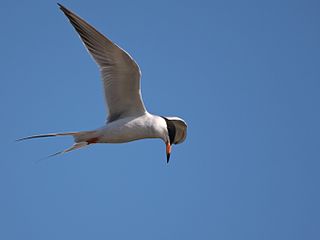Hanging with Birds at Middle Harbor Shoreline Park
/Here at Middle Harbor Shoreline Park in Oakland, CA, a tremendous view of downtown San Francisco is revealed after a heavy blanket of fog finally dissipates and misty winds stop blowing. There’s a group of us here on a mission: to find and identify as many birds as we can within two hours.
As we get organized, the first avian subjects we notice are Red-winged Blackbirds; there are numerous males singing and hanging out in the trees adjacent to our meeting place. They are quite beautiful and have great voices, but today we'll be shifting our attention to the numerous shorebirds that frequent this oddly serene park.
I write “oddly serene” because both the Port of Oakland and the City of SF are within sight and earshot. The mingling sounds of birds, waves, boats and cars create an auditory experience exclusive to the urban, shore side environment.
CCNH naturalist Tony Iwane is our leader today. He admits that reptiles are the main objects of his affection, however he certainly knows a thing or two about our flying friends. Before we really get going, Tony mentions a hummingbird nest he had found some time ago up in a tree. He shows us, and lets us know that cobwebs are a main ingredient in the nest structure. How awesome!
But now to the birding.
The first bird we find feeding on the shore a Sanderling, a type of “peep” sandpiper. These wonderfully cute specimens usually eat in groups, running in and out with the flow of the waves. We spot another sandpiper nearby. It’s the Long-billed Curlew, and these guys really do have long bills. Their feeding appendages cascade in a slightly downward curve, enabling them to get crabs and other food bits deep in the sand and/or mud.
Tony mentions that the different shapes and sizes of shorebirds’ bills are the result of evolutionary processes, allowing the birds to feed in the same area without heavy competition. We spot some Marbled Godwits, and Tony notes that their bills have a black tip, and slant slightly upward.
As we move along the shore, a bird known to rummage through the waters and mud of Lake Merritt greets us. It’s the Snowy Egret, with its white plumage and characteristic black bill and yellow feet. Tony tells us that one of their fishing techniques involves the circling of their feet in the water in an effort to “stir stuff up”. In a slightly sobering story, Tony mentions that in the late 19th and early 20th centuries egret feathers were at one point worth more than gold. It was highly fashionable to have an egret feather-laden hat, and these majestic birds were almost hunted to extinction. Thankfully, that didn’t happen.
Someone notices a Forster’s Tern flying out above the waves, conducting a reconnaissance mission for food with its beak pointed straight down towards the water. Tony laughs, and says that the feather patterns on the heads of these fierce divers remind him of balding men. We stumble upon many more shorebirds, including Willets, American Avocets, Mallards and Lesser Scaups.
Tony gives us a quick lesson on the differences between ducks. Ducks are either dabblers or divers. Mallards are dabblers, meaning that they will lean forward and submerge their front half into the water in an attempt to find food. Scaups, on the other hand, are divers. They will completely submerge themselves into the water and actually swim around underwater, sifting through the mud. I like to call them little snorkelers.
All in all, I learned quite a lot on our little jaunt. I had never even heard of many of the birds we identified. I think everyone in attendance really came out with a greater understanding of and appreciation for the wonderful biodiversity we are so lucky to have in the Bay Area.
Now I just need to get my own pair of binoculars!






